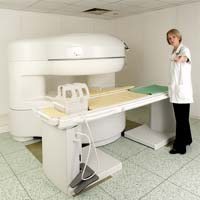PET Beats CT in Study of Mesothelioma Staging Tools
 When it comes to accurately assessing the extent of an individual case of malignant pleural mesothelioma, Positron Emission Tomography (PET) may be more effective than Computed Tomography (CT). A combination of the two is even better.
When it comes to accurately assessing the extent of an individual case of malignant pleural mesothelioma, Positron Emission Tomography (PET) may be more effective than Computed Tomography (CT). A combination of the two is even better.
That conclusion comes from researchers at the University of Toronto who analyzed the cases of more than 100 mesothelioma patients being considered for multimodality therapy at Princess Margaret Cancer Centre in Toronto.
Researchers compared the accuracy of PET and CT separately and together to determine how effective each was at identifying 1) the extent to which mesothelioma had spread to the lymph nodes (N stage) and 2) the number and location of metastatic mesothelioma tumors (M stage).
Both N and M staging are used to help choose candidates for surgery and for multimodality mesothelioma treatment.
PET Versus CT for Mesothelioma Staging
PET is an imaging test that measures the health of tissues and organs by measuring their metabolic rate. It is used in conjunction with a tracer that collects in areas of the body with higher metabolic activity, such as mesothelioma tumors.
CT scans use X-rays to produce a series of cross-sectional images of parts of the body which can be used to generate 3 dimensional models. Often, PET and CT are combined to increased diagnostic accuracy.
Identifying Mesothelioma Spread to the Lymph Nodes
Among the 101 pleural mesothelioma cases analyzed for the new study, the average age of the patients was 66. Most patients were men with epithelioid mesothelioma, which is the most common subtype of the disease.
Sixty percent of patients underwent surgery and most of these patients also had chemotherapy and/or radiation.
In 63 percent of patients, there was concurrence between the N stage as identified by PET and the N stage confirmed during mesothelioma surgery. CT scans got the N stage right in only 45 percent of cases.
For patients with N stage classifications higher than N1 (meaning there were mesothelioma cells in more lymph nodes), accuracy fell to 40 percent on PET scans but it was still better than CT, which correctly identified the higher N stage in only 21 percent of patients.
Staging Metastatic Mesothelioma
The accuracy of PET scanning was even better when it came to identifying distant mesothelioma tumors.
PET accurately found metastases in more than 91 percent of patients. When CT was used to find these distant tumors, it was accurate in only a third of patients. Used in combination, the two were even more effective.
Writing in the British Journal of Radiology, the University of Toronto researchers conclude, “PET identifies significantly more patients with nodal or distant metastatic disease than CT and may contribute to more appropriate selection of patients with malignant pleural mesothelioma for surgery or multimodality therapy.”
The availability of high-end diagnostic imaging equipment such as combination FDG-PET/CT is another reason that mesothelioma patients tend to have better outcomes when they are treated at larger tertiary medical centers.
Source:
Elliott, H St. A, et al, “18F-FDG PET/CT in the management of patients with malignant pleural mesothelioma being considered for multimodality therapy: experience of a tertiary referral center”, March 2018, British Journal of Cancer, Epub ahead of print





